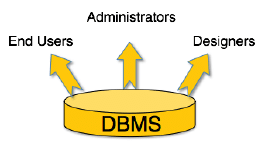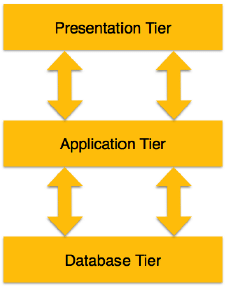Database Management | IBPS PO Prelims & Mains Preparation - Bank Exams PDF Download
Database Management System
The database is a collection of inter-related data which is used to retrieve, insert and delete the data efficiently. It is also used to organize the data in the form of a table, schema, views, and reports, etc.
For example: The college Database organizes the data about the admin, staff, students and faculty etc.
Using the database, you can easily retrieve, insert, and delete the information.
Database Management
Database management system is software which is used to manage the database. For example: MySQL, Oracle, etc are a very popular commercial database which is used in different applications.
DBMS provides an interface to perform various operations like database creation, storing data in it, updating data, creating a table in the database and a lot more.
It provides protection and security to the database. In the case of multiple users, it also maintains data consistency.
DBMS allows users the following tasks:
- Data Definition: It is used for creation, modification, and removal of definition that defines the organization of data in the database.
- Data Updation: It is used for the insertion, modification, and deletion of the actual data in the database.
- Data Retrieval: It is used to retrieve the data from the database which can be used by applications for various purposes.
- User Administration: It is used for registering and monitoring users, maintain data integrity, enforcing data security, dealing with concurrency control, monitoring performance and recovering information corrupted by unexpected failure.
Characteristics of DBMS
- It uses a digital repository established on a server to store and manage the information.
- It can provide a clear and logical view of the process that manipulates data.
- DBMS contains automatic backup and recovery procedures.
- It contains ACID properties which maintain data in a healthy state in case of failure.
- It can reduce the complex relationship between data.
- It is used to support manipulation and processing of data.
- It is used to provide security of data.
- It can view the database from different viewpoints according to the requirements of the user.
Users: A typical DBMS has users with different rights and permissions who use it for different purposes. Some users retrieve data and some back it up. The users of a DBMS can be broadly categorized as follows:
(i) Administrators − Administrators maintain the DBMS and are responsible for administrating the database. They are responsible to look after its usage and by whom it should be used. They create access profiles for users and apply limitations to maintain isolation and force security. Administrators also look after DBMS resources like system license, required tools, and other software and hardware related maintenance.
(ii) Designers − Designers are the group of people who actually work on the designing part of the database. They keep a close watch on what data should be kept and in what format. They identify and design the whole set of entities, relations, constraints, and views.
(iii) End Users − End users are those who actually reap the benefits of having a DBMS. End users can range from simple viewers who pay attention to the logs or market rates to sophisticated users such as business analysts.

3-tier Architecture
3-tier architecture separates its tiers from each other based on the complexity of the users and how they use the data present in the database. It is the most widely used architecture to design a DBMS.

- Database (Data) Tier − At this tier, the database resides along with its query processing languages. We also have the relations that define the data and their constraints at this level.
- Application (Middle) Tier − At this tier reside the application server and the programs that access the database. For a user, this application tier presents an abstracted view of the database. End-users are unaware of any existence of the database beyond the application. At the other end, the database tier is not aware of any other user beyond the application tier. Hence, the application layer sits in the middle and acts as a mediator between the end-user and the database.
- User (Presentation) Tier − End-users operate on this tier and they know nothing about any existence of the database beyond this layer. At this layer, multiple views of the database can be provided by the application. All views are generated by applications that reside in the application tier.
Data Models
Data models define how the logical structure of a database is modeled. Data Models are fundamental entities to introduce abstraction in a DBMS. Data models define how data is connected to each other and how they are processed and stored inside the system.
Entity-Relationship Model:
ER Model is based on −
- Entities and their attributes.
- Relationships among entities.
These concepts are explained below

Entity − An entity in an ER Model is a real-world entity having properties called attributes. Every attribute is defined by its set of values called domain.
Relationship − The logical association among entities is called relationship. Relationships are mapped with entities in various ways. Mapping cardinalities define the number of association between two entities.
Mapping cardinalities −
- One to one
- One to many
- Many to one
- Many to many
Relational Model
The most popular data model in DBMS is the Relational Model. It is more scientific a model than others. This model is based on first-order predicate logic and defines a table as an n-ary relation.
The main highlights of this model are −
- Data is stored in tables called relations.
- Relations can be normalized.
- In normalized relations, values saved are atomic values.
- Each row in a relation contains a unique value.
- Each column in a relation contains values from a same domain.
|
647 videos|1023 docs|305 tests
|
















